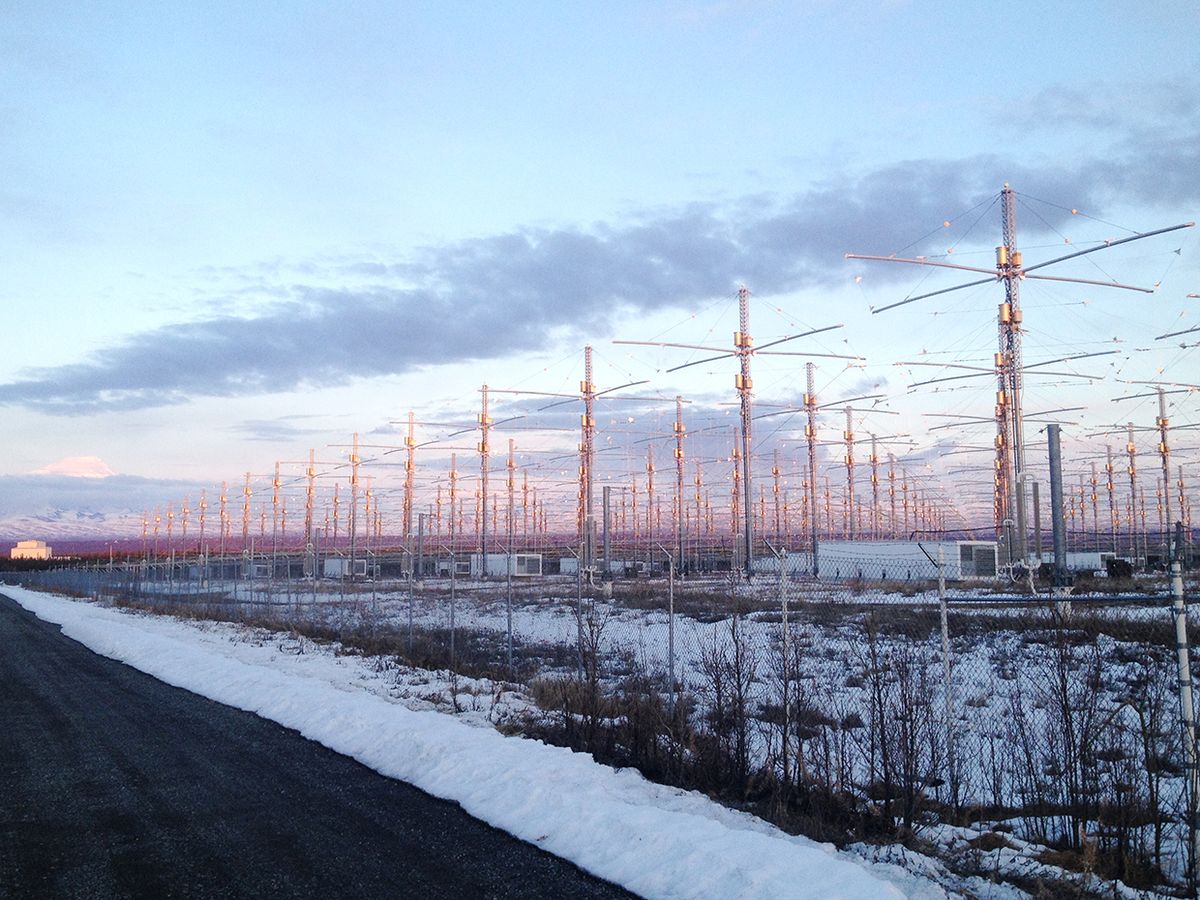Sometimes, experiments don’t work out as planned.
In late September, Christopher Fallen and technicians at the High Frequency Active Auroral Research Program (HAARP) near Gakona, Alaska, switched on a giant array of 180 antennas. They were hoping to produce radio-induced airglow, also known as artificial aurora, as a way to better understand the mechanics of natural aurora.
Such airglow would be difficult to see with the naked eye, so Fallen had set up two low-light video cameras to capture it. And he tweeted his plans, in the off chance that someone else might catch a glimpse. After all, some of the most impressive artificial aurora displays to date have been produced at HAARP.
But the sky was too cloudy. And by the time it was dark enough, the ionosphere had deteriorated too much, with relatively few electrons per cubic centimeter. Fallen wasn’t able to generate any airglow during four days of experiments.
But not all was lost. He had also embedded images into the powerful radio wave that HAARP uses to heat a patch of the ionosphere, and alerted amateur radio enthusiasts through Twitter. As the experiment ran, his feed began to light up with tweets from listeners who were sending the images back to him.

They had used slow-scan TV, which reproduces images based on patterns in audio signals, to decode the images. Fallen, an assistant professor at the University of Alaska Fairbanks’ Geophysical Institute, had transmitted two UAF logos, a cat photo, and a QR code granting the recipient 0.001 Bitcoin.
Messages returned from Pueblo, Colo., and Victoria, British Columbia. The resolution wasn’t high enough for anyone to claim the Bitcoin, but the cat was easy enough to make out. Given that HAARP’s antennas point directly up at the sky instead of out toward the horizon, Fallen was pleased with the results. “As powerful as HAARP is, it’s just a big radio,” he says.
It’s actually a giant phased array radio transmitter capable of sending 3.6 megawatts of energy into the ionosphere. Running an experiment there costs about US $5,000 and burns 600 gallons (roughly 2300 liters) of fuel per hour.

Jeff Dumps, an amateur radio enthusiast from Fairbanks, recently paid $1,200 to run a 15-minute experiment on HAARP. He was trying to simulate the Luxembourg effect, or cross-modulation that can occur between two signals as they richochet through the atmosphere. To do so, he transmitted the preamble to the U.S. Declaration of Independence and his own guitar rendition of the Star-Spangled Banner.
Dumps has visited HAARP with Fallen, and marvels at its size. “The wind kind of gusts through the antenna array so you get this weird howling,” he says. “It’s kind of ominous.”
The facility was designed to send high-frequency radio waves into the ionosphere, where radiation from the sun and distant galaxies mixes with the Earth’s atmosphere and can knock electrons out of whack. These electrons collide with oxygen and nitrogen in the atmosphere, and prompt those molecules to release photons that produce the red and green light seen in aurora.
The mechanisms by which space radiation disrupts these electrons is not well understood. In his experiment, Fallen had wanted to cycle through three frequencies—2.8 megahertz, 2.82 MHz, and 2.84 MHz—to see which produced the most vivid fake aurora. This, he thought, might provide a clue to the underlying physics. He also wanted to test two different types of polarization—or the direction the radio wave was oriented—at 2.8 megahertz, to see if polarization made any difference in the aurora that was produced.

Fallen’s next chance to answer these questions will be in early spring, when HAARP fires up for another research campaign; it only runs two a year due to staffing and funding constraints.
Heating the ionosphere directly allows scientists to conduct controlled experiments, which is a rarity in the field of atmospheric physics.
“Almost never in space science do we get to do active experiments. We almost always just sit here and wait for the sun to deposit energy and make things happen,” says John Hughes, a radar physicist at Embry-Riddle Aeronautical University who used to work at HAARP. “HAARP gives us the ability to poke it a little bit and gives us a new way to understand how this whole system works.”



